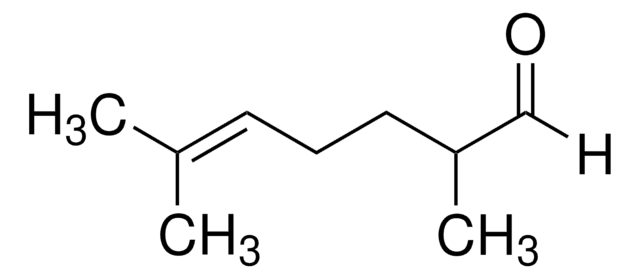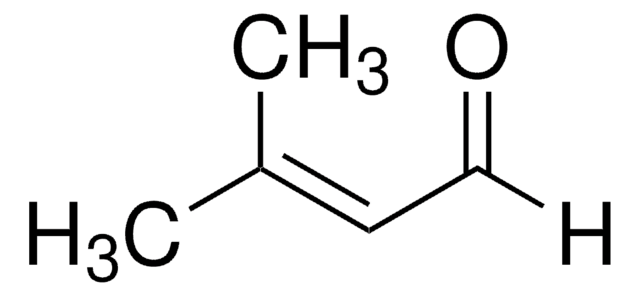All Photos(1)
About This Item
Linear Formula:
CH2=C(CH3)CH2CH2OH
CAS Number:
Molecular Weight:
86.13
Beilstein:
1071239
EC Number:
MDL number:
UNSPSC Code:
12164502
PubChem Substance ID:
Flavis number:
2.176
NACRES:
NA.21
Recommended Products
biological source
synthetic
Assay
≥97%
refractive index
n20/D 1.433 (lit.)
bp
130-132 °C (lit.)
density
0.853 g/mL at 25 °C (lit.)
application(s)
flavors and fragrances
Documentation
see Safety & Documentation for available documents
food allergen
no known allergens
Organoleptic
fruity
SMILES string
CC(=C)CCO
InChI
1S/C5H10O/c1-5(2)3-4-6/h6H,1,3-4H2,2H3
InChI key
CPJRRXSHAYUTGL-UHFFFAOYSA-N
Looking for similar products? Visit Product Comparison Guide
General description
3-Methyl-3-buten-1-ol is a volatile aliphatic alcohol found in the extracts of basil and thyme leaves, immature mangaba fruits and some honey samples.
Signal Word
Danger
Hazard Statements
Precautionary Statements
Hazard Classifications
Eye Dam. 1 - Flam. Liq. 3
Storage Class Code
3 - Flammable liquids
WGK
WGK 1
Flash Point(F)
107.6 °F - closed cup
Flash Point(C)
42 °C - closed cup
Personal Protective Equipment
dust mask type N95 (US), Eyeshields, Gloves
Choose from one of the most recent versions:
Already Own This Product?
Find documentation for the products that you have recently purchased in the Document Library.
Customers Also Viewed
Identification of volatile components in basil (Ocimum basilicum L.) and thyme leaves (Thymus vulgaris L.) and their antioxidant properties.
Lee SJ, et al.
Food Chemistry, 91(1), 131-137 (2005)
Volatile components of mangaba fruit (Hancornia speciosa Gomes) at three stages of maturity
Sampaio TS and Nogueira PCL
Food Chemistry, 95(4), 606-610 (2006)
[Penetration of primary and tertiary alcohol isomers through rubber and isolated skin].
A L Mikhaleva et al.
Gigiena truda i professional'nye zabolevaniia, (11)(11), 46-47 (1982-01-01)
Rosa A Pérez et al.
Journal of agricultural and food chemistry, 50(9), 2633-2637 (2002-04-18)
Headspace solid-phase microextraction (SPME), followed by gas chromatography (GC)-mass spectrometry (MS) determination, has been used for the analysis of honey volatiles. Two SPME fibers were employed to study the composition of volatiles from various types of Spanish honeys. The best
Our team of scientists has experience in all areas of research including Life Science, Material Science, Chemical Synthesis, Chromatography, Analytical and many others.
Contact Technical Service














